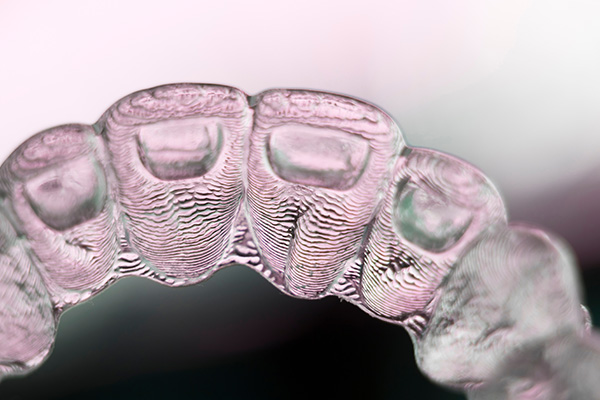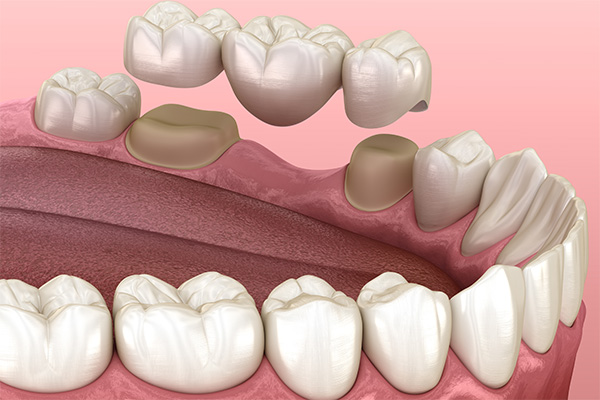Orthodontic Questions – How Does Invisalign® Work To Straighten Teeth?

The term orthodontics used to refer primarily to traditional metal braces, but many patients are now asking providers about Invisalign® as an alternative. For patients that qualify, this treatment uses clear aligners to discreetly shift the teeth into a more desirable position.
The Invisalign® treatment process
Invisalign® clear aligners work by using custom-fitted trays to put pressure on a patient’s teeth in order to reposition them. The entire process involves several essential steps and often takes up to 18 months to complete.
Determining candidacy
The first step of the Invisalign® treatment process is to schedule a consultation at an office that specializes in orthodontics. During this appointment, the orthodontist examines the patient’s teeth and possibly takes X-rays to determine if clear aligners are a suitable option. Since Invisalign® requires consistent wear and dedication on the part of the patient, it is often only recommended for older teenagers or adults. There are several issues that this treatment can potentially address:
- Correcting a mild overbite, underbite, crossbite or open bite
- Addressing overcrowding issues
- Closing gaps in the teeth
- Straightening crooked teeth
Creating a treatment plan
If a patient is a good candidate for Invisalign®, the orthodontist creates a treatment plan for how the teeth should be repositioned. In some situations, attachments or rubber bands may be necessary to achieve the desired results. 3D imaging is used to create the custom trays, which are designed to gradually shift the teeth and jaw.
Wearing Invisalign®
Once completed, Invisalign® trays are given to the patient, along with detailed instructions on how to wear them. Each set is numbered and designed to be worn for a week before moving onto the next tray. To effectively move the teeth, the patient must commit to wearing the aligners for at least 22 hours a day. Removal is acceptable during meals and for cleaning. Patients should brush the trays at least twice a day.
Attending checkups
While Invisalign® typically requires fewer office appointments than traditional braces, checkups are often required every six to 10 weeks to ensure progress is being made. If the trays are not worn properly, the teeth will shift and a completely new set of aligners may need to be made. The orthodontist may add or remove attachments during various parts of the process.
Maintaining results
The entire course of treatment course often involves anywhere from 20 to 50 sets of trays depending on the patient’s unique situation and progress. After wearing the last tray, the orthodontist examines the mouth to see if there is any room for improvement. A refinement period may be necessary, which involves wearing a few new sets of trays to make any last minor changes. Once satisfactory, the patient is given a plastic retainer to maintain the results.
Conclusion
While Invisalign® cannot address every situation, this newer type of orthodontic treatment offers several advantages. Many older patients appreciate that clear aligners are hardly visible on the teeth and can be removed, making any dietary changes unnecessary. To find out if you are a candidate for this solution, make an appointment with an orthodontist today.
Request an appointment here: https://whiteflintfamilydental.com or call White Flint Family Dental at (301) 273-1085 for an appointment in our Rockville office.
Check out what others are saying about our services on Yelp: Read our Yelp reviews.
Recent Posts
A dental bridge is an option for replacing missing teeth that creates a literal bridge from one remaining permanent tooth to the next. Traditionally, these bridges consist of a false tooth, or pontic, connected to a crown placed upon adjacent teeth on either side, although similar, but modified types of bridges do exist.There are multiple…
While people cannot always prevent losing a tooth, there are multiple options for replacing missing teeth. Whether tooth loss is caused by gum disease, an accident, or a genetic condition, it can harm your physical well-being as well as your mental health. It’s common to feel self-conscious if you have a noticeably missing tooth, and…
Dental implants and bridges can both be used to replace one or multiple missing teeth. Having multiple missing teeth can put a dent in one’s oral health. Patients who have lost a lot of teeth not only have trouble chewing but even smiling while out in social gatherings.The world of dentistry has evolved so much…
Options for replacing missing teeth are not just about aesthetics - they can restore your ability to chew effectively and avoid bone loss after teeth are gone. Toothless gaps can be filled by dental implants, bridges, or dentures, but if you're looking for more immediate results, there are other options for replacing missing teeth available…


